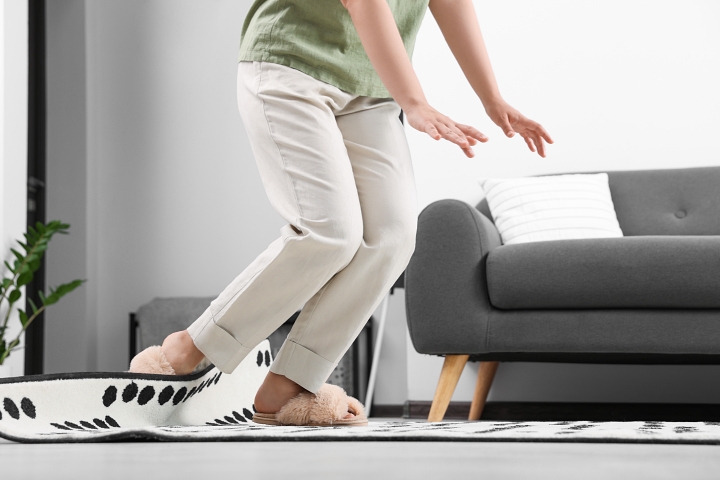Recovering from Stroke? Don’t Let These 7 Walking Mistakes Set You Back
Better Walking Starts by Avoiding These Mistakes
Recovering your walking ability after a stroke is an incredible accomplishment. You’ve put in the work. Strengthening exercises, therapy sessions, and daily practice. But what if your progress feels slower than expected? Or certain strategies just don’t feel quite right?
The truth is, some of the most common walking tips used in stroke rehab can unintentionally make things harder in the long run. Based on my professional experience working with stroke survivors, here are 7 mistakes that could be holding you back.
Mistake #1: Using a One-Handed Device on Your Strong Side
Example: A hemi-walker placed on your stronger arm right after a stroke.
It may seem logical to add stability to your strong side, but this often backfires, especially early in rehab. Devices like hemi-walkers have wide bases and offer so much support that they reinforce leaning and over-reliance on your strong side. This makes it harder to relearn balanced walking, and the habit is tough to unlearn.
What to try instead:
- Two caregivers for hand-held assistance, this encourages symmetry.
- A two-handed walker, possibly with your unaffected hand gently strapped to guide use of both sides.
- If compensations are already present, try placing the device in front of you and avoid keeping it off to the side.
- In the later stages of recovery, consider switching to a walking stick or trekking pole. These give support without encouraging one-sided leaning.
Mistake #2: Assuming Any AFO (Ankle-Foot Orthosis) Will Work
AFOs are often issued early in rehab, but not all are created equal. If your walking form or speed is off, the wrong AFO can make things worse, like stiffening your leg or limiting natural movement.
Real example: One client’s speed training hit a wall because her non-articulated AFO didn’t allow enough ankle flexibility. Once adjusted, her walking improved significantly.
What to try instead:
- Work closely with a physical therapist and orthotist to find an AFO tailored to your goals.
- If it’s not working, let them know. The best providers will try other solutions.
Mistake #3: Throwing Away Your AFO (Ankle Foot Orthosis) Too Soon
Sometimes a therapist says you “don’t need your AFO anymore.” While that may feel like progress, ditching it completely can lead to setbacks.
Here’s why: Spasticity never disappears fully. It’s always there in the background, and when compensations sneak back in, stiffness often follows.
What to try instead:
- Wean off your AFO gradually.
- Use it when walking in public or on long outings, but practice walking without it safely at home.
- Keep the AFO on hand. If spasticity returns, wear it for a week or two to reset.
Mistake #4: Focusing Too Much on Walking Quality Instead of Speed
This might sound counterintuitive, but speed and distance often matter more than form.
What to try instead:
- Prioritize speed and distance if you spend a lot of time in a wheelchair
- Work on a “normalized” walking form only if you’ve had no recent falls, and especially if it’s been years since your stroke.
Mistake #5: Focusing on “Heel-Toe” Cues
“Walk heel-toe” is common advice, but it might not be helping you.
Here’s the issue: Telling someone with spasticity to push off with their toe can actually increase toe pointing, delay foot clearance, and make foot drop worse.
What to try instead:
- Use the cue: “Heel, heel.” Eliminate “toe” from your vocabulary altogether.
- This gives your foot more time to clear the ground and helps prevent tripping.
Mistake #6: Only Strengthening Glutes
Many stroke survivors are told to “strengthen your glutes,” but stroke recovery is about retraining movement patterns, not just building muscle.
Why that matters: A stroke affects the brain’s ability to control movement, not the muscle’s ability to activate. For example, you might be able to squeeze your glute, but still struggle to stand on that leg without your hip dropping.
What to try instead:
- Focus on functional exercises like single-leg standing. Aim to hold your hip steady without dropping.
- Think movement, not just strength.
Mistake #7: “Don’t Look Down”
You’ve probably heard this one before, but it’s misleading. Looking down is normal and necessary for safe walking.
What’s actually dangerous is bending your head and shoulders forward to look at your feet.
What to try instead:
- Glance down with your eyes, not your head.
- Keep your neck upright and shoulders back.
- Look 6–10 feet ahead, but check the ground as needed, especially if you can’t fully feel your feet.
Final Thoughts
Stroke rehab is challenging, and there’s no one-size-fits-all solution. The key is understanding why something is being recommended, and making sure it truly supports your long-term goals.
If any of these tips resonated with you, try out the alternatives and see how they feel. Improving your walking isn’t just about strength or form. It’s about confidence, safety, and freedom.
Why Eccentric Control Might Be the Missing Link in Your Stroke Recovery
Why Eccentric Control Might Be the Missing Link in Your Stroke Recovery After a stroke, movement rarely returns the way we’d like. Instead of smooth, controlled motion, you get stiffness... or those annoying synergy patterns—where every muscle seems to fire at once....
Why Plyometrics Matter After Stroke (Even if They Sound Scary)
Why Plyometrics Matter After Stroke (Even if They Sound Scary) Let’s start with the obvious: The word "plyometrics" sounds like something reserved for athletes, not stroke survivors.But stay with me—because if you’re in the later stages of recovery, this could be the...
Stages of Motor Learning Post Stroke
Why Everything Feels So Hard (and What That Actually Means for Your Recovery) If you have ever said: “Why is this so hard?” “I could do this yesterday—why not today?” “Why can’t I remember how to move?” You are not alone. If you’ve had a stroke and you're in rehab,...
Blocked, Random, or Distributed? How to Choose the Right Practice Schedule in Stroke Recovery
Blocked, Random, or Distributed? How to Choose the Right Practice Schedule in Stroke Recovery Let’s talk about one of the most overlooked pieces of stroke recovery: How you practice. Not what…Not how long…But how the practice is structured. Because believe it or not,...
You have just had a stroke. Now what?
You’ve Just Had a Stroke. Now What? Acute Phase Recovery Guide – What to Expect in the First Few Days First Things First… If you’re here, you or someone you love has likely just had a stroke. Let’s pause for a moment and say what most people won’t: This is...
Gravity Matters: How to Use It (or Remove It) in Stroke Recovery
Gravity Matters: How to Use It (or Remove It) in Stroke Recovery When I say "use gravity to your advantage"… what I really mean is: be strategic. One of the biggest mistakes I see in rehab (especially home programs) is doing exercises that are technically correct—but...
Use Synergy Patterns Sparingly (and Here’s Why That Matters)
Let’s talk about something that shows up in nearly every stroke recovery journey: synergy patterns. You might not know them by name. But if you’ve ever noticed your arm “wants” to move in one big sweeping motion (instead of just lifting your hand)… or if your leg...
Best Arm Rehab Post Stroke
Discover how new research is changing what’s possible for stroke survivors with little to no arm movement. https://youtu.be/Bw-rd1Fx02cWhat if I told you that even if you can’t move your arm after a stroke, there are still powerful ways to promote recovery—and...
Food Is Fuel—and Medicine: Why Nutrition Shapes Your Recovery
What you eat might be the most powerful rehab tool you're not using. Nutrition isn’t just about weight or willpower. It’s not about which diet is trending this year. And it’s definitely not about perfection. It’s about function. And when your brain is trying to heal,...
Stroke Recovery Essentials: 4 Non Negotiables For Brain Healing
We talk a lot about exercises in stroke recovery. But here’s the truth: recovery doesn’t start with movement—it starts with oxygen. When a stroke cuts off blood flow, your brain enters a chemical storm. Inflammation surges. Oxidative stress damages neurons. The...














